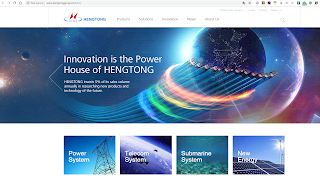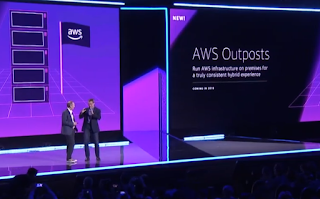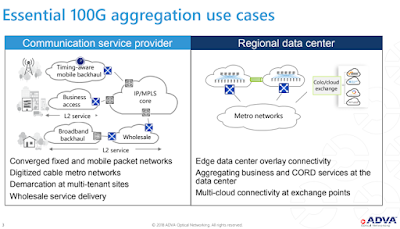AWS is launching a new Ground Station service allowing customers to purchase capacity at a satellite ground station on a pay-as-you-go basis.
The company says that while the cost of launching a satellite into low-earth orbit has come down, capturing data from the satellite and transmitting it to the cloud is more difficult and expensive than it should be.
The new
AWS Ground Station service begins operations with a pair of ground stations, and plans to have 12 in operation by mid-2019. Each ground station is associated with a particular AWS Region; the raw analog data from the satellite is processed by our modem digitizer into a data stream (in what is formally known as VITA 49 baseband or VITA 49 RF over IP data streams) and routed to an EC2 instance that is responsible for doing the signal processing to turn it into a byte stream.
This means that customers don’t need to build or maintain antennas in order to capture data from satellite resources.
Amazon also announced a strategic collaboration to integrate the new AWS Ground Station service with Lockheed Martin’s new Verge antenna service, which is a distributed network of low-cost receivers. Each Verge antenna costs under $20,000 and uses common, readily-available parts (COTS hardware). Under4 the partnership, Lockheed Martin Verge customers benefit from being able to upload satellite commands and data through AWS Ground Station and to quickly download large amounts of data over the high-speed AWS Ground Station network.
“Together, AWS and Lockheed Martin are providing satellite operators increased flexibility, resiliency, and scale in a complete connectivity solution, ground architecture, and cloud environment for integrated satellite and data management operations,” said Rick Ambrose, Executive Vice President of Lockheed Martin Space. “Our collaboration with AWS allows us to deliver robust ground communications that will unlock new benefits for environmental research, scientific studies, security operations, and real-time news media. In time, with satellites built to take full advantage of the distributed Verge network, AWS and Lockheed Martin expect to see customers develop surprising new capabilities using the service.”
https://aws.amazon.com/blogs/aws/aws-ground-station-ingest-and-process-data-from-orbiting-satellites/
Amazon is launching a
private edition of AWS Marketplace that lets enterprises create a custom digital catalog of pre-approved software products for their employees. AWS Marketplace currently offers 35 categories and more than 4,500 software listings from more than 1,400 Independent Software Vendors (ISVs). AWS says its customers use over 650 million hours a month of Amazon EC2 for products in AWS Marketplace and have more than 950,000 active software subscriptions. The new Private Marketplace makes it easier for enterprises to deliver licensed software to their employees.
Amazon Comprehend Medical is a new natural language processing service that uses real-time APIs forr language detection, entity categorization, sentiment analysis, and key phrase extraction. The service could be used by medial organization to extract actionable data from patient records.
AWS is launching more powerful machine learning instances based on NVIDIA GPUs - Amazon
EC2 P3 instances now offer up to 8 NVIDIA Tesla V100 GPUs and up to 100 Gbps of networking throughput.
There are now
180 container software products on offer in the AWS Marketplace in categories such as high performance computing, security, and developer tools.
Amgen, one of the world’s leading biotechnology companies, has selected AWS for the vast majority of its cloud infrastructure. Amgen uses AWS’s compute, storage, database, analytics, and machine learning services, to support the development of new applications and to automate processes in the cloud.
Korean Air Lines Co. is going "all-in" of AWS and plans to shut down its private data centers over the next three years. Korean Air plans to leverage Amazon Simple Storage Services (Amazon S3) and AWS data warehousing and analytics services, such as Amazon Redshift and Amazon Athena, for its data lake project. As part of Korean Air’s all-in journey to AWS, the airline is migrating production workloads including its website, loyalty program, flight operations, and other mission-critical operations to AWS.
AWS IoT Events is a new, fully managed IoT service for detecting and responding to events from IoT sensors and applications. AWS says its service can detect events across thousands of IoT sensors sending telemetry data, such as temperature from a freezer, humidity from respiratory equipment, or belt speed on a motor.
AWS IoT Greengrass, which enables local compute, messaging, data caching, sync, and ML inference capabilities on edge devices, now supports connectors to third-party applications and AWS services, hardware root of trust private key storage, and isolation and permission settings.
 As part of the project, Zayo will increase the overall fiber count on its existing UK network, and add two new unique routes, spanning from coast-to-coast, in order to complete the ring. The deployment will use high-count, ultra-low loss fiber types, built over the shortest physical paths. Work is expected to be completed in less than 12 months.
As part of the project, Zayo will increase the overall fiber count on its existing UK network, and add two new unique routes, spanning from coast-to-coast, in order to complete the ring. The deployment will use high-count, ultra-low loss fiber types, built over the shortest physical paths. Work is expected to be completed in less than 12 months. As part of the project, Zayo will increase the overall fiber count on its existing UK network, and add two new unique routes, spanning from coast-to-coast, in order to complete the ring. The deployment will use high-count, ultra-low loss fiber types, built over the shortest physical paths. Work is expected to be completed in less than 12 months.
As part of the project, Zayo will increase the overall fiber count on its existing UK network, and add two new unique routes, spanning from coast-to-coast, in order to complete the ring. The deployment will use high-count, ultra-low loss fiber types, built over the shortest physical paths. Work is expected to be completed in less than 12 months.



















































